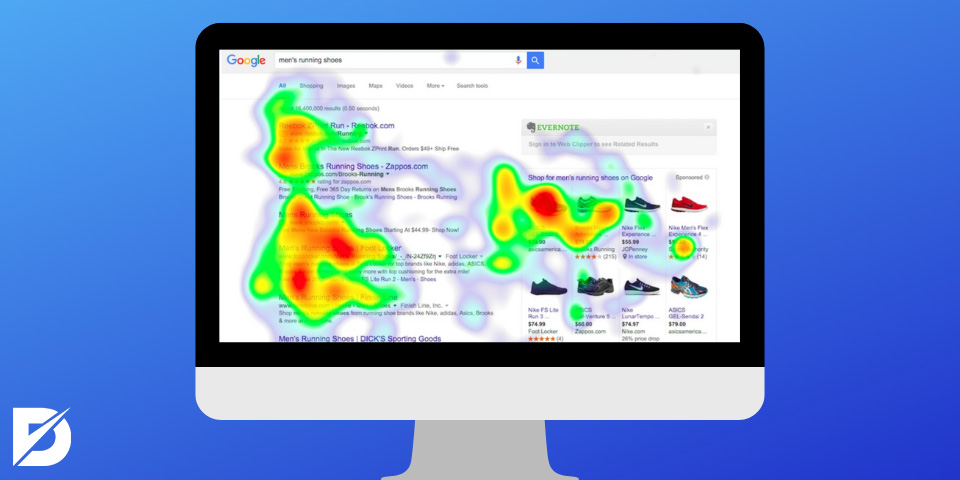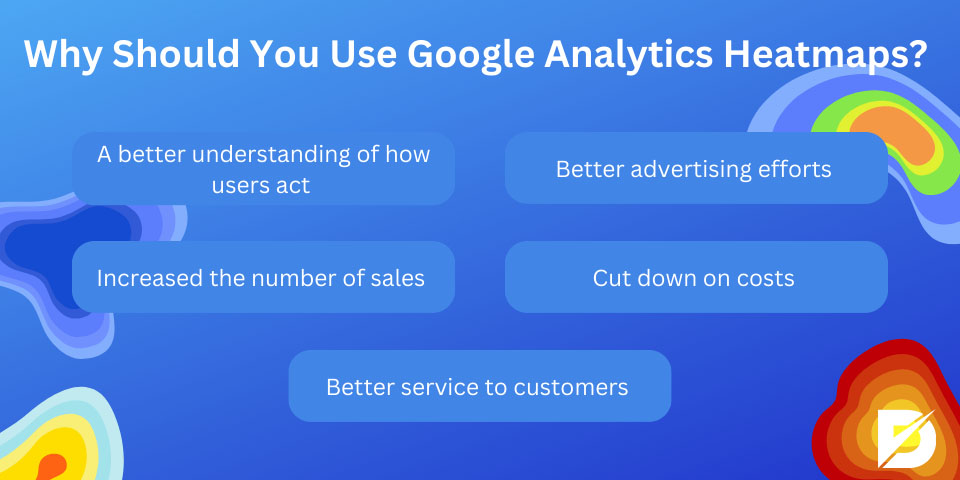In the digital age we live in now, it’s important to have a website. It’s even more important for any business or person who wants to build a web profile. But it’s not enough to just have a website. It’s important to know how your website works and whether it reaches the people you want. Here is where heat map analytics can help. Google Analytics is a strong tool that Google gives you that lets you track and collect useful data about how well your website is doing. By looking at information about your website’s traffic, conversion rate, bounce rate, average session length, and page views, GA can tell you a lot about how people use your site.
One of the best things about page analytics by Google is that it lets you track how well your website is doing in real time. This means you can see how many people are on your site, what pages they look at, and how long they stay. This information is very helpful for learning how people use your website and making decisions that will improve its performance. The conversion rate is another important number that Google Analytics gives you. This metric measures how many of your website’s users do something you want them to do, like make a purchase or fill out a contact form. By keeping track of your conversion rate, you can figure out where your website may be failing and make the changes you need to make to boost rates.
How Do Heatmaps Work?
A website heat map is one of the most common tools analysts and marketers use to track user behavior and understand how people interact with digital goods. A heat map is a visual representation of how people use a website. Red is the largest level of interaction, and blue is the lowest.

Heatmaps might help you determine what parts of your website could improve. You can change a part of your website that doesn’t get enough clicks to get more people to click on it. Similarly, you can change your website to reduce the number of hits on pages that get too much traffic.
How To Use Google Analytics Heatmaps
You may begin tracking website data with Google’s heatmaps in just 3 easy steps.

- Add an extension to Chrome: You must look for the Page Analytics Chrome Extension in the Chrome Extension shop. Set up the Google heat map plugin to get started with heatmap and GA.
- Switch On The Google Chrome Extension: When you go to your website after downloading it and pick the Page Analytics app at the top of the screen of your Chrome browser, it should show that the setup process was successful. But you need an account before you can use Google Heat Map. Also, you need to put the code for Analytics on your page.
- Use Google Analytics Heatmap To Analyse Your Website: By clicking on the “Message Bubble” button, you can open the “Heatmap” on your website. This shows how many clicks each part of your site gets. You will also get other Google Analytics 4 data, such as the number of visits and bounce rates, among other things.
Why Should You Use Google Analytics Heatmaps?
Putting Google heat maps on your site can help you in several ways. These ways are:
- A better understanding of how users act
- Better advertising efforts
- Increased the number of sales
- Cut down on costs
- Better service to customers

Heatmaps aid in determining how people utilize digital goods. This data can improve how people use things and make them more user-friendly. You can use heatmaps to track the effectiveness of marketing activities and determine which areas are most effective at attracting attention. This insight can be used to make future campaigns more successful.
By analyzing where users click, tap, or stay on a page, firms can make design adjustments to improve conversion rates. Businesses can save development and production expenses by knowing which product parts are the most popular with customers.
Create The Custom Report
You might wish to create a personalized report depending on your particular requirements to get the most out of your heat map. Click Customise in the Customise box on the right side of your page. Next, select “New Report” and give your report a name, such as “Heatmap.”
Then, include the names of the days and the hours you wish to measure in addition to the measures themselves. You can also include an extra detail you want to pay attention to. You’ll be able to see your report once you’re finished.
Select the color you want to use for the heat map’s “Value” section. Because of the colors, you can now easily identify which moments were nice and which were poor. By clicking on the table, deselecting the measure you want to change from, and clicking on the measure you want to change to. Then apply the Heatmap once more, you may quickly change the measures.
The number of rows and sections can then be used to gather more information. The calculator can also be used to divide two metrics to obtain additional information, such as conversation rates, etc.
Where Can You Use Google Analytics Heatmaps?
Google’s page analytics are useful for displaying data and may be applied in various contexts, including sharing and analyzing it. Here are a few applications for heatmaps in various contexts:
Because it demonstrates how users interact with a website or mobile app, a heatmap is an excellent tool for user experience and marketing. Design and user experience can be enhanced by identifying the most popular locations for clicks, glances, and interactions. For example, “click maps” reveal which areas of a website people click on most frequently, assisting marketers in refining their strategies.
A heatmap can be used to determine which products and services are the most popular and how frequently users click on them on websites. Therefore, e-commerce methods can be enhanced by learning which products receive more attention, where users click, and where sales are strongest.
You can use heatmap analyses to enhance the user interface of an app or website. Therefore, a user-friendly design may be created by determining what people focus on, where they struggle, and where they spend the most time.
Tips To Use Google Analytics
Understanding how users interact with digital platforms like websites and mobile apps requires using a heatmap. A heatmap is a visual representation of the areas of a website that people find most interesting and those they tend to overlook.
Before you can examine user behavior, you need a mapping tool. These tools include a lot of online tracking applications. You can observe where visitors click on your pages, what fields they fill out, and where they spend more time.
There are a few key considerations when applying heat mapping analytics. First, it’s critical to gather sufficient data to guarantee the accuracy of the findings. As a result, you might wish to continue using your mapping tool while also observing its user base. A comparison of several iterations of your pages is crucial to your heatmap analysis. To make changes in the future, you can find out which page layouts or styles users like.
Unveiling The Key Insights From Heatmaps
We delved deep into Google Heatmap Analytics in this blog post. A wonderful approach to learning more about how website visitors use it is using Google Heat Map. You can monitor the performance of your website and observe how your data looks using Page Analytics by Google Heat Map. Additionally, it helps you better comprehend your users’ behavior, enabling you to make adjustments to appeal to your target audience.
Other Articles About Google Analytics
- Google Analytics Conversions Ideas
- Google Analytics 4 vs Universal Analytics
- Google Search Console vs Google Analytics
- Best Google Analytics Plugins for WordPress
- Improve SEO with Google Analytics
Frequently Asked Questions About
It is a tool for making sense of data that uses colors to show how close together data points are. As there are more points of data, the color gets darker.
Yes, Google heat mapping analytics by Google is also available on mobile phones and tablets. Mobile heatmaps can show you how people use your website on different screen sizes and devices.
To discover trends, user behavior changes, and optimization effects, check out page analytics by Google Data regularly. To make data-driven decisions, examine your website regularly or quarterly, depending on traffic and update frequency.
Heatmaps are an important tool in web design. With heatmaps, web designers may learn where people look, see how users interact, and make user-friendly design changes.
It is important to consider user privacy while using heat mapping analytics. Ensure to anonymize and aggregate data, prevent accumulating sensitive information, and avoid collecting it. Make the data collection process transparent in your website’s privacy policy, and if at all possible, provide users the option to opt-out.





No comments to show.